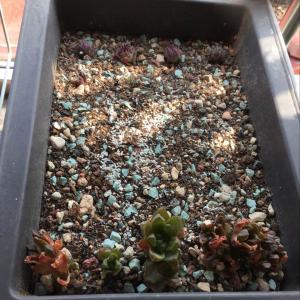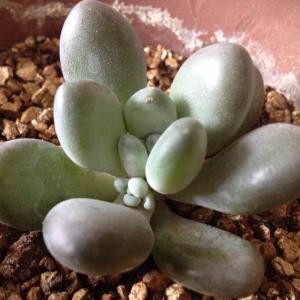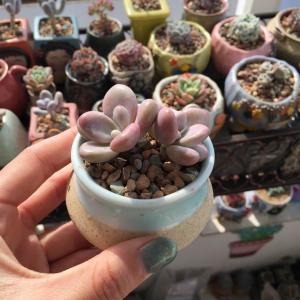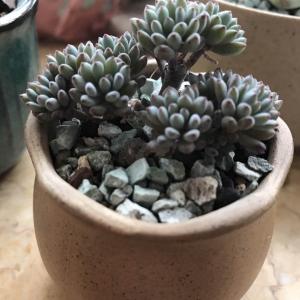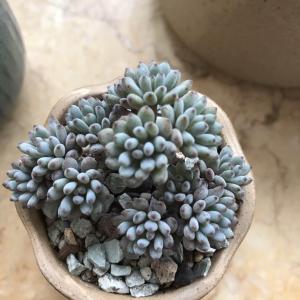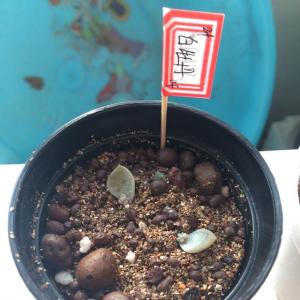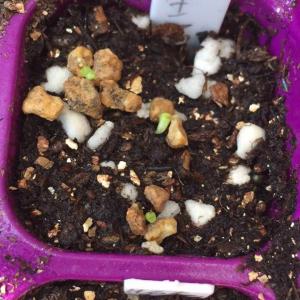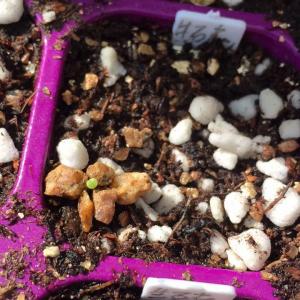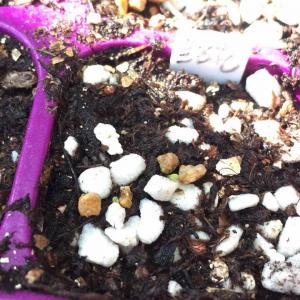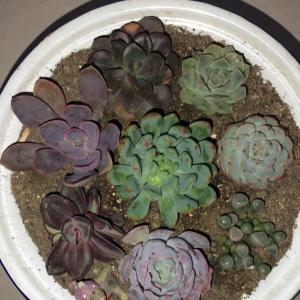文章
小马奥
2017年02月22日

Not only the #vegetables but #fruits can be grown in pots too. Here are 14 best fruits to #grow in pots.
Buy a disease free potted plant from a reputed nursery or online and start in a small to medium sized pot (3-5 gallons) and then repot the plant gradually into the bigger ones. A 20-25 gallon size pot is an ideal one for a fruit tree in the container.
Best Fruits To Grow In Pots1. Lemon

USDA Zones— 8-11, *can be grown in cooler zones with care in winter
Lemon trees have adapted themselves for container gardening. However, it is a tropical fruit but gardeners in cool temperate regions are also successfully growing this tangy and sour fruit in containers. Almost all the varieties are suitable but there are some that grows best in specific conditions. Read the information given in this article to grow your own lemon tree.
2. Strawberries

Strawberries are without a doubt one of the best fruits to grow in pots. The best about growing strawberries in containers is they are easy to grow, don’t require large pots or space and you can grow on your small urban balcony. You can also try to grow strawberries in tropics in winters. Check out our guide on growing strawberries here.
3. Apple

Dwarf apple trees are very suitable for growing in pots, you can even keep on a balcony or small terrace. When growing an apple tree in such a small space it would be better if you choose a self-fertile variety so that you don’t need to grow more than one plant. All the other requirements for growing apple tree in a pot is available here.
4. Pomegranate

*can be grown in cooler zones with care in winter
Pomegranate is one of the juiciest and healthiest fruits and perhaps the easiest to grow in pots because it has shallow root system when compared to other large fruit trees. If you’ve grown citrus in pot, growing pomegranates in containers can not be difficult for you too. Moreover, pomegranate is more cold hardy and easy to grow. Learn how to grow it in pot in this article.
5. Fig

0
As figs are most suitable for warm temperate regions (USDA Zones 8-10) it is best to grow a fig tree in a pot if you live in a climate where winters are harsh or you don’t have enough space. Choose an appropriate variety to grow in a pot and provide plenty of sun to your plant. Regular pruning and fertilization are necessary.
6. Nectarines and Peaches

Both the nectarines and peaches are available in dwarf varieties. Most of these dwarf varieties don’t exceed the height of 6-8 feet and are self-fertile. Some dwarf peach varieties are “Golden Gem”, “El Dorado”, “Garden Gold” and “Southern Sweet”. Dwarf nectarine varieties you can grow in pots are “Nectarcrest”, “Fantasia”.
7. Cherry

Bush cherry cultivars are suitable for container gardening. Cherries prefer a mild climate and a little water as it dislikes wet feet. However, drought and high temperatures could damage the plant as well, but it survives well in the cold. The cherry tree favors a soil that is well drained and composed of plenty of organic matter.
8. Guava

*can be grown in cooler zones with care in winter
Guava tree will delight you with its sweetly scented flowers, delicious fruits, and beautiful tropical appearance. Guava loves the sunny and warm exposure. It is a tropical plant but very much adaptable to temperate climates with moderate winter. Learn how you can grow guava tree in pot here.
9. Watermelon
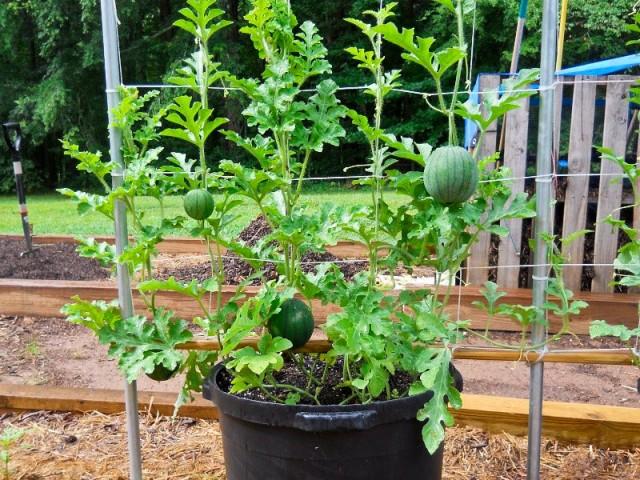
Watermelons are easy to grow in pots, all they need is a good support and well-drained potting soil. Growing watermelon is similar to cucumbers, you can find out all the information in our article.
10. Banana

Growing banana in a pot is easy and its lush green appearance can give any place a tropical look and feel. Banana trees grow in tropical and subtropical parts of the world and therefore they love full sun, heat and humidity. However, there are cultivars available that are mildly cold hardy and suitable for warm temperate zones. Find out how to grow it in a pot here.
11. Pineapple

Pineapple plants are small and compact and never grow more than 3-6 feet tall. Also, the plant has shallow roots when compared to other fruit bearing plants or trees that’s why it is possible to grow them in pots. However, pineapples require consistently warm and humid climate to thrive but you can also grow them as a houseplant in temperates, providing several hours of direct sunlight daily.
12. Raspberries

Raspberries are bit tricky and unruly to grow in containers but still everbearing varieties like “Heritage”, “Raspberry Shortcake” and “Fall Gold” are a good choice. All these varieties are self-fertile and easy to grow in pots. Here’s a useful article on growing raspberry in containers.
13. Blueberries

Growing blueberries in pots is a good idea if the soil in your garden is not acidic. Providing a potting mix for Azaleas and camellias or other acid loving plants and a large pot is essential so that your blueberry plant will grow easily and provide fruit for years.
14. Oranges and Citruses

All the oranges and citruses can be grown in pots as they are rather large shrubs or small trees. If you live in a climate where winters are mild these fruits are really easy to grow, however, you can still grow an orange tree in a cold climate with care in winter. In pots, you can grow calamondin, buddha’s hand citron, clementines orange etc.
Buy a disease free potted plant from a reputed nursery or online and start in a small to medium sized pot (3-5 gallons) and then repot the plant gradually into the bigger ones. A 20-25 gallon size pot is an ideal one for a fruit tree in the container.
Best Fruits To Grow In Pots1. Lemon

USDA Zones— 8-11, *can be grown in cooler zones with care in winter
Lemon trees have adapted themselves for container gardening. However, it is a tropical fruit but gardeners in cool temperate regions are also successfully growing this tangy and sour fruit in containers. Almost all the varieties are suitable but there are some that grows best in specific conditions. Read the information given in this article to grow your own lemon tree.
2. Strawberries

Strawberries are without a doubt one of the best fruits to grow in pots. The best about growing strawberries in containers is they are easy to grow, don’t require large pots or space and you can grow on your small urban balcony. You can also try to grow strawberries in tropics in winters. Check out our guide on growing strawberries here.
3. Apple

Dwarf apple trees are very suitable for growing in pots, you can even keep on a balcony or small terrace. When growing an apple tree in such a small space it would be better if you choose a self-fertile variety so that you don’t need to grow more than one plant. All the other requirements for growing apple tree in a pot is available here.
4. Pomegranate

*can be grown in cooler zones with care in winter
Pomegranate is one of the juiciest and healthiest fruits and perhaps the easiest to grow in pots because it has shallow root system when compared to other large fruit trees. If you’ve grown citrus in pot, growing pomegranates in containers can not be difficult for you too. Moreover, pomegranate is more cold hardy and easy to grow. Learn how to grow it in pot in this article.
5. Fig

0
As figs are most suitable for warm temperate regions (USDA Zones 8-10) it is best to grow a fig tree in a pot if you live in a climate where winters are harsh or you don’t have enough space. Choose an appropriate variety to grow in a pot and provide plenty of sun to your plant. Regular pruning and fertilization are necessary.
6. Nectarines and Peaches

Both the nectarines and peaches are available in dwarf varieties. Most of these dwarf varieties don’t exceed the height of 6-8 feet and are self-fertile. Some dwarf peach varieties are “Golden Gem”, “El Dorado”, “Garden Gold” and “Southern Sweet”. Dwarf nectarine varieties you can grow in pots are “Nectarcrest”, “Fantasia”.
7. Cherry

Bush cherry cultivars are suitable for container gardening. Cherries prefer a mild climate and a little water as it dislikes wet feet. However, drought and high temperatures could damage the plant as well, but it survives well in the cold. The cherry tree favors a soil that is well drained and composed of plenty of organic matter.
8. Guava

*can be grown in cooler zones with care in winter
Guava tree will delight you with its sweetly scented flowers, delicious fruits, and beautiful tropical appearance. Guava loves the sunny and warm exposure. It is a tropical plant but very much adaptable to temperate climates with moderate winter. Learn how you can grow guava tree in pot here.
9. Watermelon

Watermelons are easy to grow in pots, all they need is a good support and well-drained potting soil. Growing watermelon is similar to cucumbers, you can find out all the information in our article.
10. Banana

Growing banana in a pot is easy and its lush green appearance can give any place a tropical look and feel. Banana trees grow in tropical and subtropical parts of the world and therefore they love full sun, heat and humidity. However, there are cultivars available that are mildly cold hardy and suitable for warm temperate zones. Find out how to grow it in a pot here.
11. Pineapple

Pineapple plants are small and compact and never grow more than 3-6 feet tall. Also, the plant has shallow roots when compared to other fruit bearing plants or trees that’s why it is possible to grow them in pots. However, pineapples require consistently warm and humid climate to thrive but you can also grow them as a houseplant in temperates, providing several hours of direct sunlight daily.
12. Raspberries

Raspberries are bit tricky and unruly to grow in containers but still everbearing varieties like “Heritage”, “Raspberry Shortcake” and “Fall Gold” are a good choice. All these varieties are self-fertile and easy to grow in pots. Here’s a useful article on growing raspberry in containers.
13. Blueberries

Growing blueberries in pots is a good idea if the soil in your garden is not acidic. Providing a potting mix for Azaleas and camellias or other acid loving plants and a large pot is essential so that your blueberry plant will grow easily and provide fruit for years.
14. Oranges and Citruses

All the oranges and citruses can be grown in pots as they are rather large shrubs or small trees. If you live in a climate where winters are mild these fruits are really easy to grow, however, you can still grow an orange tree in a cold climate with care in winter. In pots, you can grow calamondin, buddha’s hand citron, clementines orange etc.
0
0
Hakuna Matata
2017年02月20日

2月14日情人节,种下二棵“龙沙宝石”~

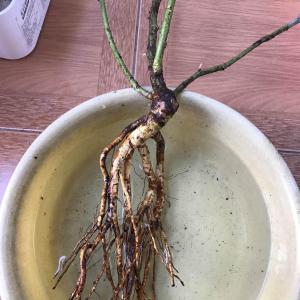
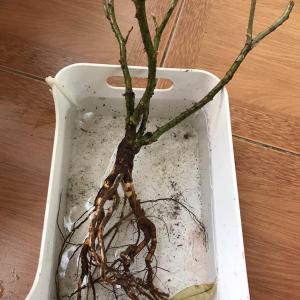
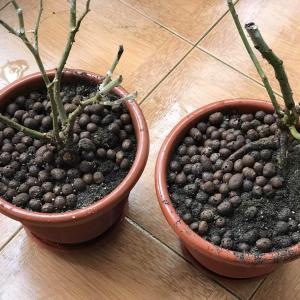

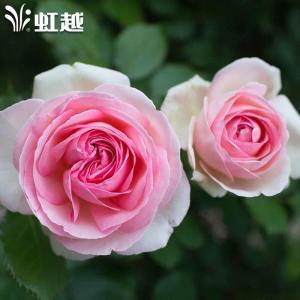






1
0
Hakuna Matata:@lrgarden 很不错!当年就开了这么多花朵~
lrgarden:@Hakuna Matata 去年春天买的大苗,现在冬眠状态,可以看我的花园里面有成长记。
Hakuna Matata:@lrgarden 什么时候种下的?长得怎么样啦?
lrgarden:我也有一颗😀
文章
Erin
2016年12月26日

#growing-fruit-tips
DOS
1.Do provide plenty of sunlight. Tomato plants need sunlight and lots of it. They need about 10 hours of direct sunlight a day during the summer (and 10-14 hours of bright diffused light a day as seedlings.)
2.Do start with healthy soil. A well amended soil is a must. I like to add a scoop of compost to every hole that I dig for any plant, and tomatoes are no exception. Soil that is full of rich compost is the secret weapon to any tomato grower and organic material is the best. There is just on chemical substitute for well good, old fashioned compost.
3.Do plant seedlings deeply. Tomato plants do best with a healthy root system. I like to choose a tall plant and pull of some of the lower leaves and plant it deeply into the hole. Roots will form along the planted stem and this will make for a very healthy plant.<img src="1000062739_24273_1482734228.jpg">
4.Do know your soil type. Tomatoes like soil that will hold water but not make them too soggy. The wrong soil type an cause all sorts of problems from flower drop, blossom end rot and split fruit.
5.Do remove lower leaves. These are the first leaves to grow on your plant and they are the easiest ones to develop fungus and other problems. As they plant grows, they also get the least amount of light ans circulation so they are more vulnerable to disease. Removing them also keeps them out of reach of the water.
6.Do Water Deeply from the roots. Tomato plants love water and they like a deep watering. A soaker hose works best for tomato plants. (affiliate link) Also see my tutorial for a soda bottle drip feeder here.
7.Do stake your plants. Indeterminate tomato plants can grow to 10 feet or more and definitely need some staking. Even determinate plants will get to 3 feet. If you don’t stake, the weight of fruit may break your stems.<img src="1000062740_24273_1482734228.jpg">
8.Do Mulch. While we are on the topic of watering, be sure to add mulch. Bring it to a few inches from the stem, right over a soaker hose. This conserves the water and helps to prevent soil born pathogens from getting on to the leaves.
9.Do pinch suckers. Small suckers will grow at each leaf axil. This can weaken the plant and won’t bear fruit. Pinch these out to encourage great plant growth.<img src="1000062741_24273_1482734229.jpg">
10.Do rotate your crop. If you plant your tomatoes in the same spot each year, you encourage soil borne pests and diseases to take hold. Move the area where you plant to another spot in your garden every three years or so.
11.Do choose a spot with good air circulation. Making sure there is plenty of air around the plants keeps the risk of many diseases at bay.
12.Do watch out for caterpillars. Horn worm caterpillars can devastate a tomato crop. Be on the look out and remove if you find them.
13.Do plant again. If you live in a sunny growing zone, be sure to practice succession planting. Add another crop a few weeks after you plant the first one to ensure luscious tomatoes all summer long.
DOS
1.Do provide plenty of sunlight. Tomato plants need sunlight and lots of it. They need about 10 hours of direct sunlight a day during the summer (and 10-14 hours of bright diffused light a day as seedlings.)
2.Do start with healthy soil. A well amended soil is a must. I like to add a scoop of compost to every hole that I dig for any plant, and tomatoes are no exception. Soil that is full of rich compost is the secret weapon to any tomato grower and organic material is the best. There is just on chemical substitute for well good, old fashioned compost.
3.Do plant seedlings deeply. Tomato plants do best with a healthy root system. I like to choose a tall plant and pull of some of the lower leaves and plant it deeply into the hole. Roots will form along the planted stem and this will make for a very healthy plant.<img src="1000062739_24273_1482734228.jpg">
4.Do know your soil type. Tomatoes like soil that will hold water but not make them too soggy. The wrong soil type an cause all sorts of problems from flower drop, blossom end rot and split fruit.
5.Do remove lower leaves. These are the first leaves to grow on your plant and they are the easiest ones to develop fungus and other problems. As they plant grows, they also get the least amount of light ans circulation so they are more vulnerable to disease. Removing them also keeps them out of reach of the water.
6.Do Water Deeply from the roots. Tomato plants love water and they like a deep watering. A soaker hose works best for tomato plants. (affiliate link) Also see my tutorial for a soda bottle drip feeder here.
7.Do stake your plants. Indeterminate tomato plants can grow to 10 feet or more and definitely need some staking. Even determinate plants will get to 3 feet. If you don’t stake, the weight of fruit may break your stems.<img src="1000062740_24273_1482734228.jpg">
8.Do Mulch. While we are on the topic of watering, be sure to add mulch. Bring it to a few inches from the stem, right over a soaker hose. This conserves the water and helps to prevent soil born pathogens from getting on to the leaves.
9.Do pinch suckers. Small suckers will grow at each leaf axil. This can weaken the plant and won’t bear fruit. Pinch these out to encourage great plant growth.<img src="1000062741_24273_1482734229.jpg">
10.Do rotate your crop. If you plant your tomatoes in the same spot each year, you encourage soil borne pests and diseases to take hold. Move the area where you plant to another spot in your garden every three years or so.
11.Do choose a spot with good air circulation. Making sure there is plenty of air around the plants keeps the risk of many diseases at bay.
12.Do watch out for caterpillars. Horn worm caterpillars can devastate a tomato crop. Be on the look out and remove if you find them.
13.Do plant again. If you live in a sunny growing zone, be sure to practice succession planting. Add another crop a few weeks after you plant the first one to ensure luscious tomatoes all summer long.
3
0



